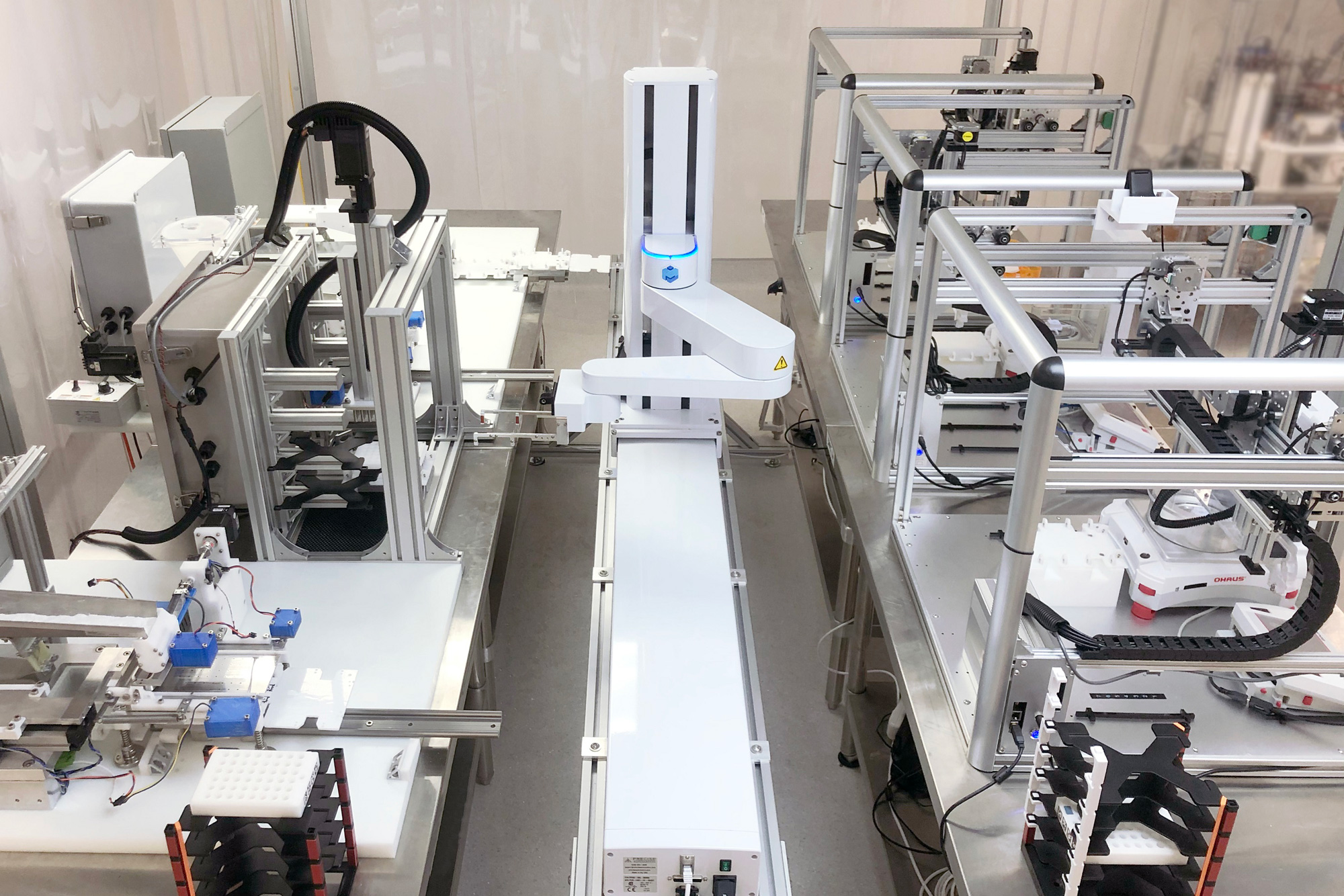Robotics Combined with Biologic Therapies
The future of spinal surgery is moving beyond stabilization, alone. While hardware and precision have long been the foundation of care, biologic therapies are emerging as powerful partners in promoting healing. Robotics is expected to play a major role in delivering these therapies with accuracy. Dr. Larry Davidson, a leader in minimally invasive spinal surgery, has pointed out that combining robotics with biologic treatments could transform recovery, creating procedures that stabilize fractures, while also enhancing the body’s ability to heal.
Pairing robotics’ millimeter-level precision with biologics such as growth factors, bone graft substitutes and stem cell injections, surgeons may soon achieve outcomes that were previously out of reach. The integration of these technologies promises not only safer stabilization, but also accelerated healing, stronger fusions and better long-term results.
The Role of Biologics in Spine Surgery
Biologic therapies are designed to stimulate the body’s natural healing processes. In spinal surgery, biologics such as Bone Morphogenetic Proteins (BMPs), demineralized bone matrices and stem cell treatments promote bone growth and fusion. These therapies reduce the risk of non-union and improve stability, by strengthening the biological foundation around hardware. Currently, biologics are applied during surgery by hand, often in graft beds or around implants. While effective, manual application leaves room for variability in placement and dosage. Robotics may provide a way to deliver biologics with greater precision and consistency.
How Robotics Enhances Delivery
Robotics already guide screws and rods with accuracy measured in millimeters. The same systems could be adapted to deliver biologicals directly to targeted areas of the spine. For instance, a robotic arm could position stem cells precisely at a fracture site or distribute growth factors evenly across a fusion bed. This approach minimizes waste, allows for precise dosing and targets biologics exactly where they can have the greatest effect. Reliable, accurate delivery enhances the potential of these therapies, setting a new benchmark for patient care.
Personalized Healing Strategies
The combination of robotics and biologics also supports personalized medicine. Preoperative imaging and planning software could identify areas of weak bone or limited healing potential. Robotics would then deliver biologics specifically to those regions, tailoring therapy to each patient’s unique anatomy and health profile. This personalized strategy maximizes the impact of biologics. In patients with osteoporosis, for example, reinforcement can be focused on the areas of greatest fragility, supporting stronger fusion and improved spinal stability.
Improving Fusion Success
Fusion success is one of the most critical determinants of spinal surgery outcomes. Non-union, where bones fail to heal together, can lead to instability, pain and the need for revision surgery. By combining biology with robotic precision, fusion rates may improve dramatically. Robotics guides the precise placement of biologics across the fusion site, while growth factors and stem cells promote faster healing. Combined, these approaches enhance the chances of a successful fusion, minimize complications and support lasting spinal stability.
Dr. Larry Davidson says, “Combining advanced robotic tools with surgical expertise elevates patient care, by making procedures safer and recovery more manageable.” This perspective highlights that the true promise of innovation lies not only in precision, but also in delivering care that restores patient confidence and improves quality of life.
Benefits for Complex Cases
Complex spinal cases, including deformities and multi-level fractures, often involve extensive hardware and long fusions, which increase the risk of non-union. Combining robotics with biologics could enhance outcomes, by delivering precise support at every level. Targeted application of biologics may also limit complications, like inflammation or excessive bone growth. For patients undergoing the most demanding procedures, this integration offers greater safety and long-term durability.
Accelerating Recovery
Biologics help accelerate bone healing, and robotics guides their precise placement. Combined, they can promote faster fusion, potentially shortening recovery times. Patients may return to daily routines, work or athletic activity sooner. This approach is especially beneficial for older adults or those with fragile bones, as quicker healing lowers complication risks and supports earlier mobilization, which is vital for overall health and independence.
Athletes and Advanced Healing
Athletes recovering from spinal injuries have unique demands, as their return to performance depends on both stability and resilience. Robotics combined with biologics offers a pathway to meet these goals.
Precise delivery of biologics strengthens repairs, while minimizing surgical trauma. This combination may allow athletes to rehabilitate faster and return to competition with confidence, that their spines are both stable and biologically supported.
Training and Integration
Surgeons will need specialized training to combine robotics and biologics effectively. Mastering the planning of biologic delivery, alongside imaging and navigation, will be a key part of future surgical education. Simulation labs may incorporate modules that teach both hardware placement and targeted biologic application using robotic systems. Mentorship will remain essential. While technology offers powerful tools, clinical judgment is critical, guiding surgeons to apply biologics responsibly, while prioritizing patient safety.
Advances on the Horizon
Research is already exploring ways to integrate robotics and biologics. Smart implants coated with biologically active materials may one day be placed robotically, combining mechanical stability with healing support. AI-assisted robotics could further refine delivery, analyzing patient data to determine the optimal type and amount of biologic for each case. Portable robotic systems may expand access, bringing these benefits to more hospitals and patients.
Patients as Partners in Healing
Patients will be central to this future of integrated care. Learning how robotics and biologics work together helps them recognize the benefits of advanced treatments. Education builds trust and encourages patients to take an active role in their recovery. When patients understand that biologics are applied with precision, they gain confidence in their surgical plan and engage more fully in rehabilitation. This collaborative approach between patients and providers enhances outcomes at every stage.
The integration of robotics and biologics represents one of the most exciting frontiers in spinal surgery. By combining mechanical precision with biological healing, surgeons will be able to offer patients care that is both safer and more effective. It means faster and more reliable recoveries. It represents a future where stabilization and healing are addressed simultaneously, supported by technology designed to maximize outcomes. Robotics and biologic therapies are poised to converge in spinal surgery, creating treatments that stabilize fractures, while accelerating healing. Precision delivery of growth factors, stem cells and bone graft substitutes will strengthen fusion success and reduce complications.




